This weekend I visited the latest fascinating addition to London’s skyline, a construction that would probably have attracted a lot more attention had it not opened immediately before the Olympics — an event it was partly conceived to serve.
Its official name is the rather ghastly corporate speak of ‘The Emirates Air Line’ after its sponsors — who also have their name symbiotically linked to Arsenal’s stadium. However, if taking the Emirates money was the difference between constructing this spectacular cable car ride and not then I’m glad Boris and TFL took the shilling. It’s magnificent and I’d recommend anyone to take a ride — take a look at this view of the Shard that I took from ninety metres above the Thames.
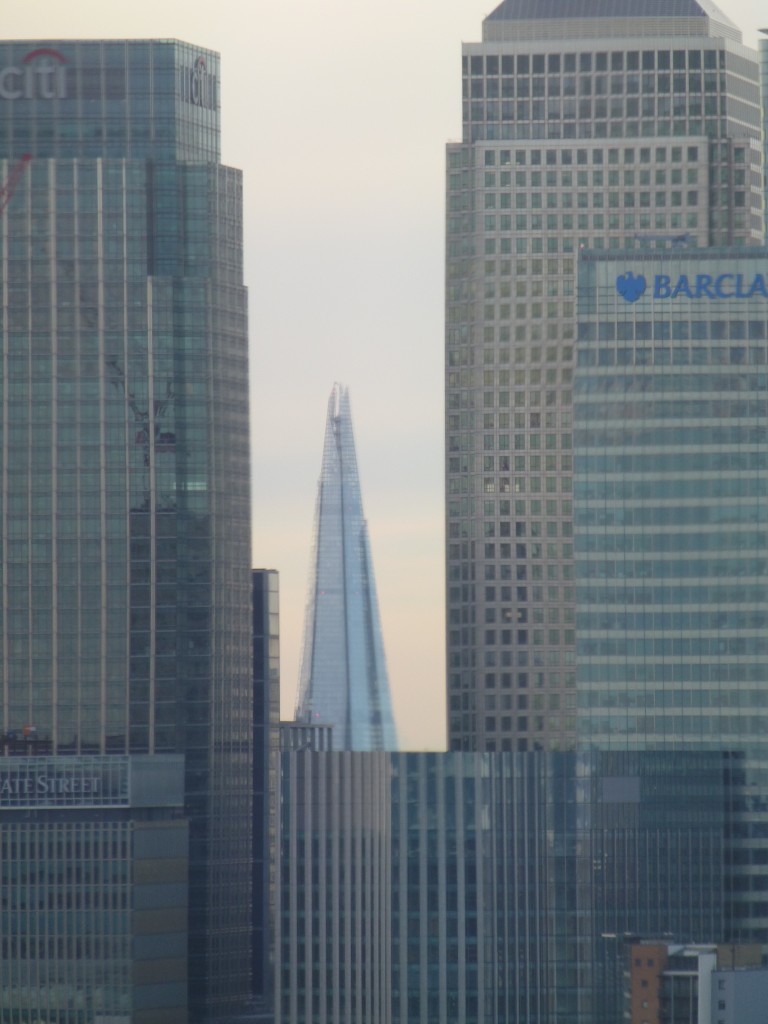
Stunning: shame I didn’t get the top of 1 Canada Water but the Shard only appears between the Canary Wharf buildings for a few seconds, such is the speed of the ride.
It’s apparently the most expensive cable car system built anywhere in the world — a legacy of the ‘cost is no object’ building frenzy in East London in the run up to the Olympics. It opened ahead of schedule a month before the games and theoretically links the ‘North Greenwich Arena’ (O2/Millennium Dome) with Excel in the Royal Docks area.
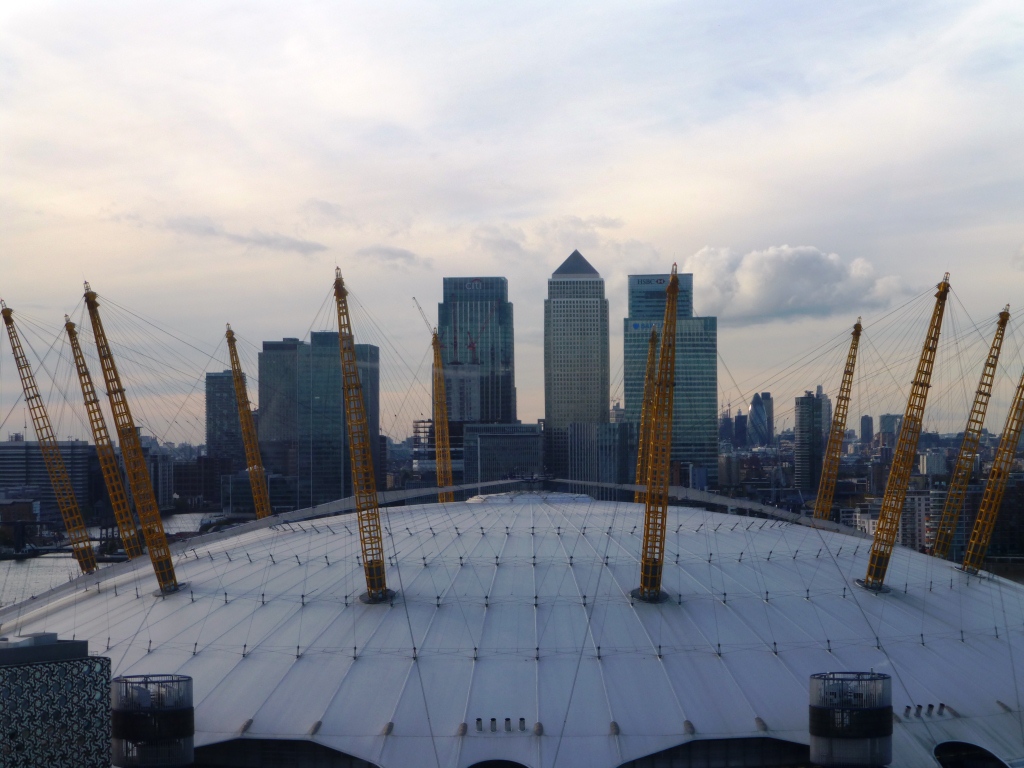
Its two boarding stations are pretty much in the middle of nowhere, which makes the cable car’s presence all the more surreal. It’s the type of structure that would probably never have been built at any other time and so, to my mind, all the more valuable for that — like many other highlights of last summer, it’s frankly a bit bonkers.
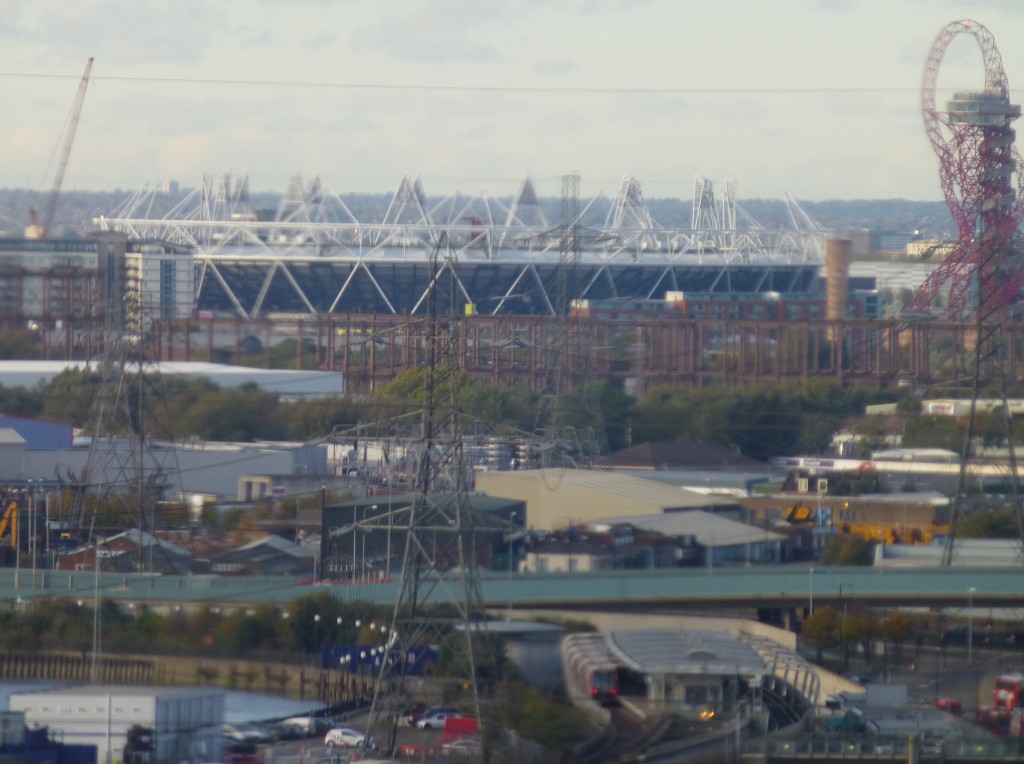
The photo above shows post-Olympic contrasts in this part of London. The stadium (now looking darker after the removal of the white decoration that clothed its circumference) and Orbit tower sit in the distance surrounded by a post-industrial landscape of squat warehouses, electricity pylons and tube lines.
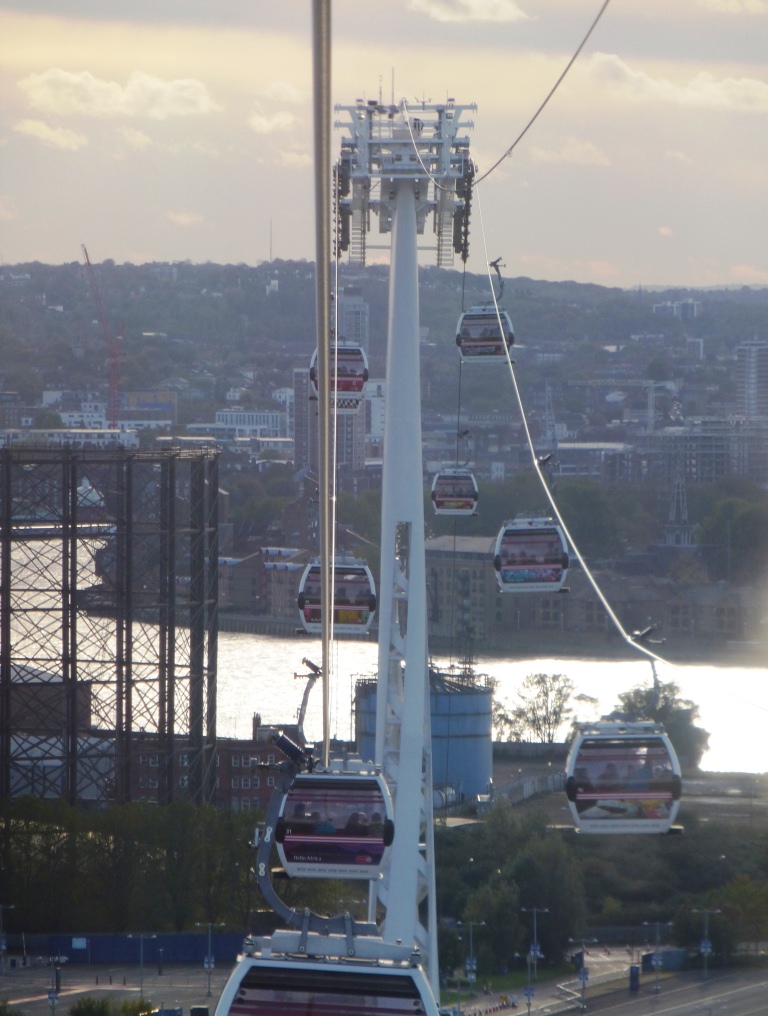
Maybe in years to come large numbers of commuters will actually commute across from one regenerated side of the Thames to the next? (As hinted above, it’s an integrated part of Transport for London — you can get a discount with an Oyster or Travelcard but not fly for free.) In the meantime it brings some fun to this rather bleak and windswept part of London.
As well as Canary Wharf, the dome and the Olympic Park, the cable car gives great views of the rest of London — including the unusual perspective of the City from the East. The push to move the centre of gravity of London to the east, of which the Olympic legacy was meant to be part, is reflected in my novel. Much of the London of The Angel is surveyed in the two photos below:
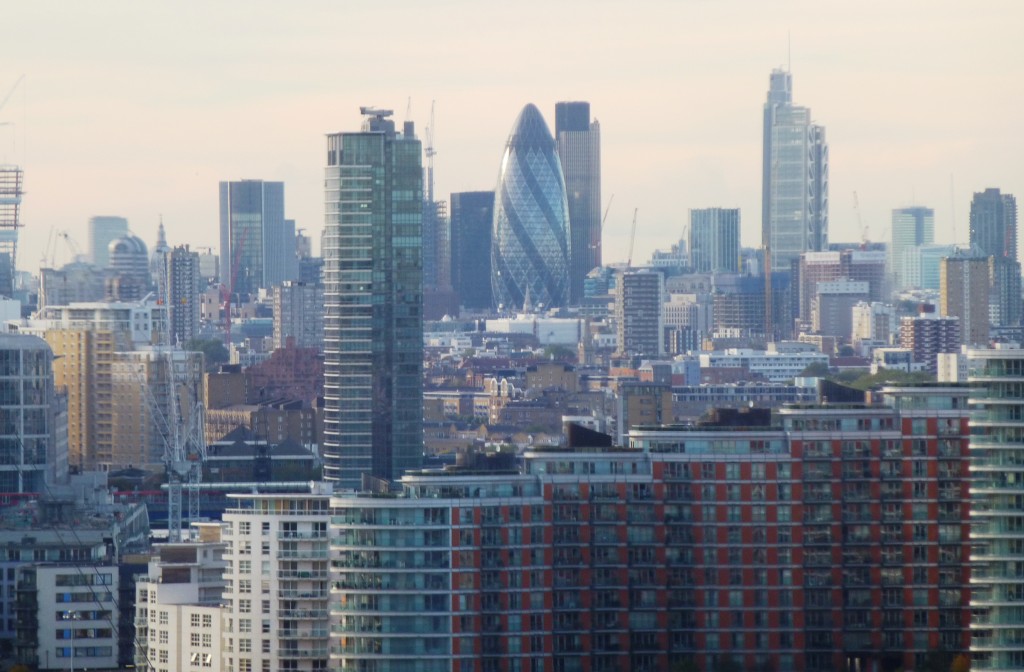
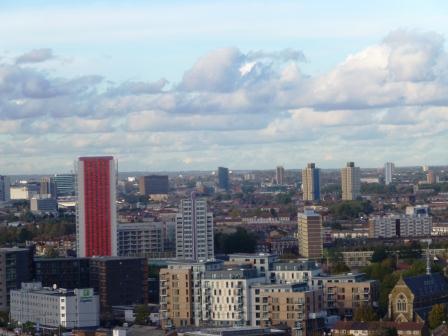
Apart from a brief excursion in the middle of the novel, the furthest the characters go west is the line of the hidden river Fleet (running approximately down Farringdon Road to Blackfriars Station). The characters work and play in the bohemian, unmanicured areas of Shoreditch, Old Street, Spitalfields and Brick Lane that abut the City and live further out in the likes of Dalston and Hackney Wick.
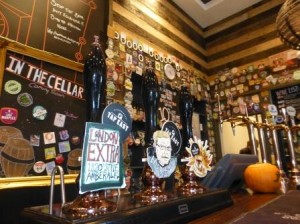
I started off my trip with a visit to a new pub brewery in the unlikely setting of the retail temple of Stratford Westfield (bibulous research for the novel) and then moved on from the southern terminus of the cable car into Greenwich.
Walking from the area of the O2 into Greenwich, I was struck by how much of this area is still post-industrial and a little down at heel — quite a contrast from the centre of Greenwich around the Cutty Sark where the pubs and bars were heaving at 6pm.
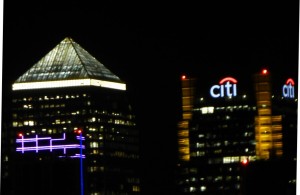
As night fell the towers of Canary Wharf illuminated like beacons in the dark — I walked through the Olympic equestrian venue of Greenwich Park and took a night-time version of the stunning vista that was featured in the horse-jumping events. But with their bankers’ logos on display, the towers across the river seemed to represent the distance and remoteness of the financial institutions from the London that surrounds them — the tension and conflict that I’m trying to tap into as the wellspring of The Angel.
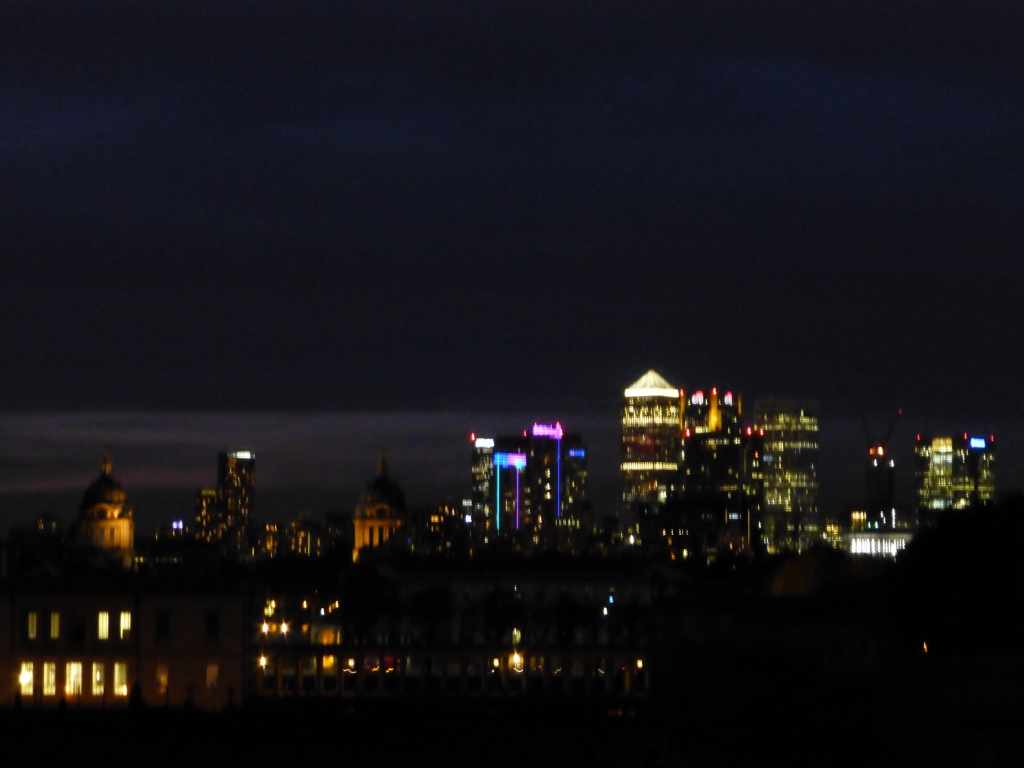
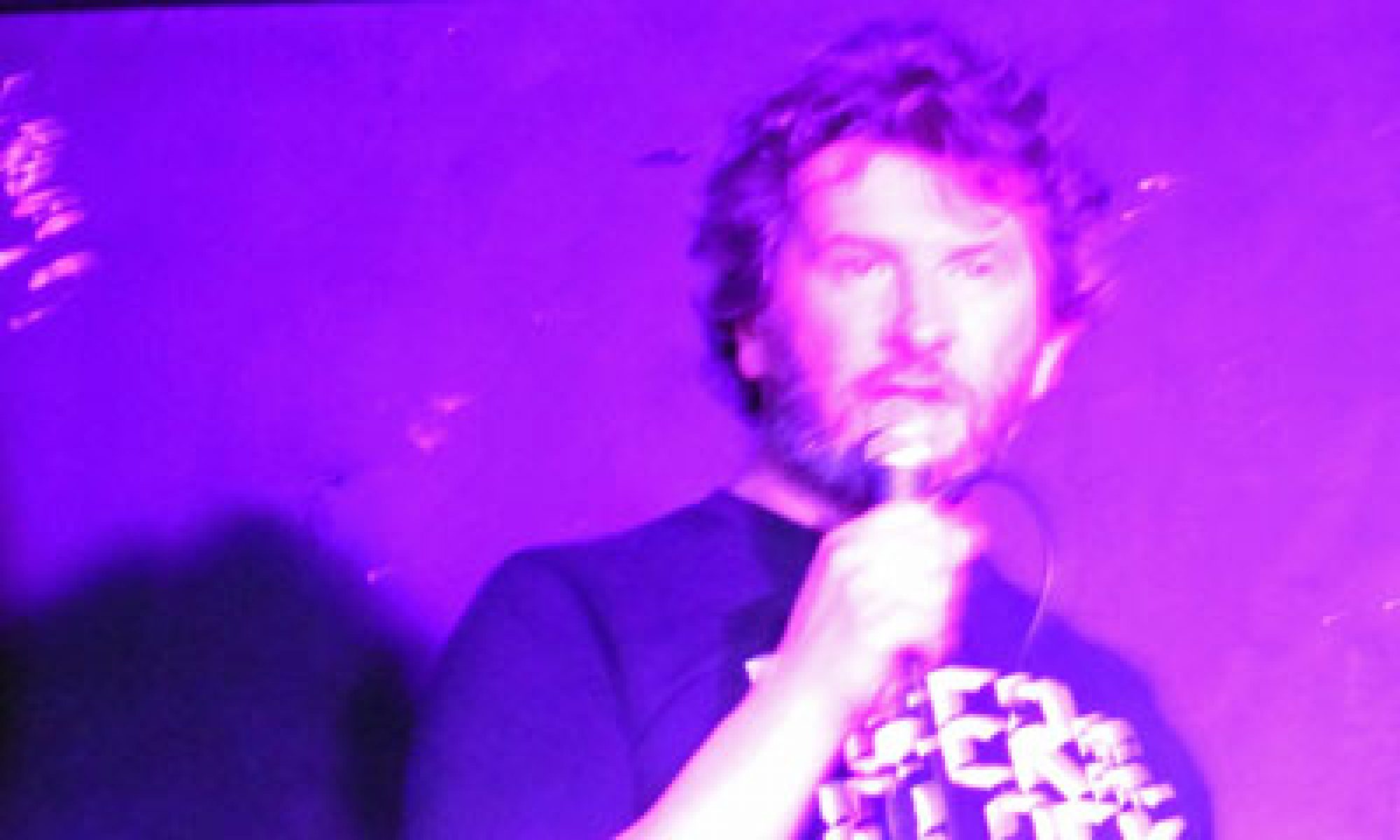
Fab photos, Mike. Great that you have the setting for your novel so well nailed. Sounds like a very interesting area. Good luck with getting it done. Kathy xx
Thanks Kathy. Yes, it is an interesting area as, unlike most places in this country, it’s changing so quickly. I notice the changes in Shoreditch from when I first started writing the novel and the Olympic area speaks for itself. In fact those changes mean I need to get a move on and finish revising and submit the thing.
Other parts of the blog show that the novel contrasts this urban East London with leafy Buckinghamshire – the cosmopolitan melting pot with the (supposedly) indomitably English shires. Which place will my protagonists choose in the end?
How’s everything write wise then , Mike?
Bren,
Good news and bad news on my writing progress. Good news is that I’ve recently been able to write a fair amount. I’ve just completed a nearly 7,000 word section that replaces a chapter that Emma Sweeney didn’t like towards the middle of the novel. The bad news is that the original chapter was more like 2,000 words. So I have increased my word count by 5,000 when I need to reduce it instead. But I think the quality is OK and I may be able to use this section to give character information that I spend a lot of words establishing in the existing novel.
I’ll need to be even more brutal with cutting out material to trim the word count so it may mean that a lot of the writing that we workshopped at City (such a long time ago now) might well be totally discarded. Is this process the same for you?
I feel like I need to write a couple more chapters that address deficiencies that Emma picked up and then I will go through the text with the equivalent of a huge red pen. Sadly I can’t see the manuscript being ready before December and I doubt whether there’s any point whatsoever in submitting something over Christmas and the New Year — better to use that time polishing it. So I’m hoping that in January I might be sending it out. How about you?
I’m also just about to write a blog post about how the novel has encouraged me to do lots of activities that I normally wouldn’t — and that my writing time has ironically been eaten away by doing things that have been prompted by the novel.
How are things with you? How close are you to feeling that you’ve done the final edit?
Mike
Yes Mike, A LOT of what gets written is later discarded. But this is an important part of the process,if at times rather infuriating. I am about 25% into the revision but much of the time I am having to think really hard about how each chapter turns the plot. At times I wonder when I will ever be done with it but I must say that working with this editor has quite radically altered my mode of thinking about the entire project. She tells me it ‘s going well and coming together. These things can’t be hurried. Even if I have writing time I may not be ready to write, so I think or I also have started writing short fiction/flash fiction as an interlude sometimes. I am doing an open mic this coming Thursday at London Writer’s Cafe/Open Pen in The Shooting Star pub nr Liverpool St Station if you are around – would be great to have you there. But the novel is my principal focus still, of course and I reckon by next spring I will done( I hope). It’s one of the most difficult things I have ever atempted in my life but definately, most definately, it remains a labour of love.
Bren Gosling
Bren,
Do you know what time you’re likely to be reading on Thursday? I may have a prior engagement (subject to confirmation) but might be able to pop into the Shooting Star at certain times during the evening.
I recently put a comment on Emma Darwin’s blog saying similar to you — that writing a novel is the hardest thing, intellectually, that I’ve ever done (and I have two Master’s degrees).
Still, I’m learning a lot as I go and I think the next one I get down to writing will go a lot more efficiently — but maybe not be as much of a life-changing experience.
Mike
Mike …it’s open mic, so wont know the order until I get there. I believe it starts at 6.30pm
Bren